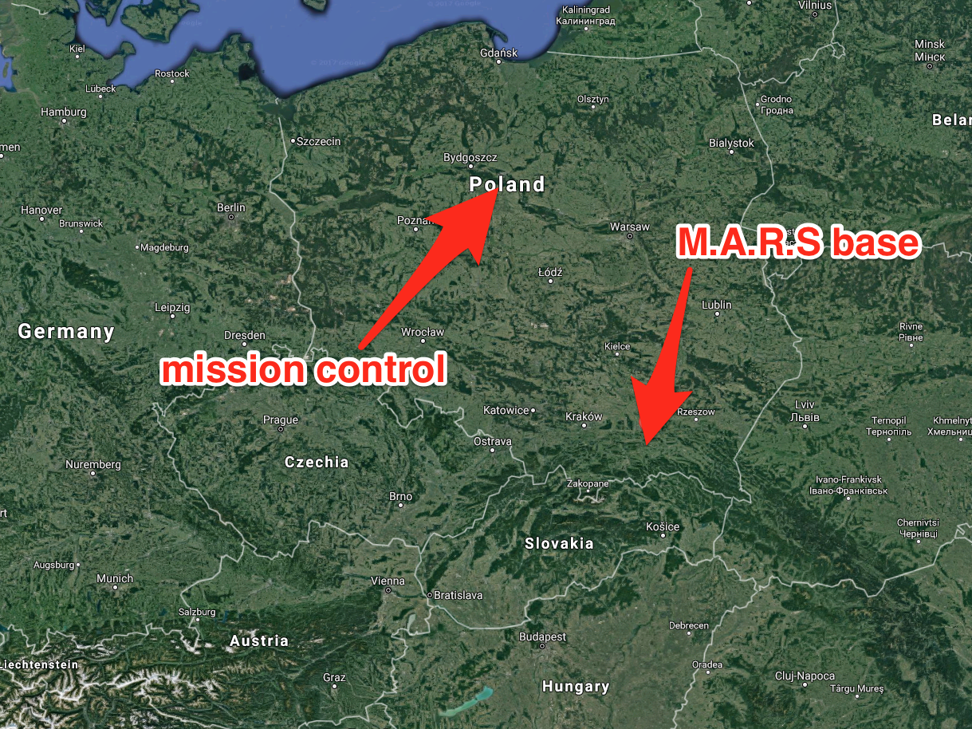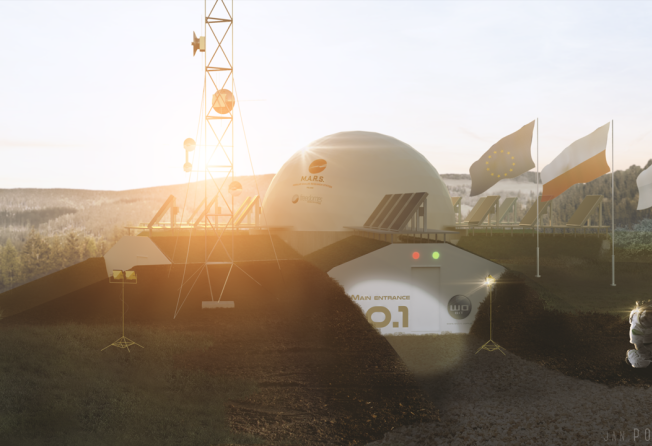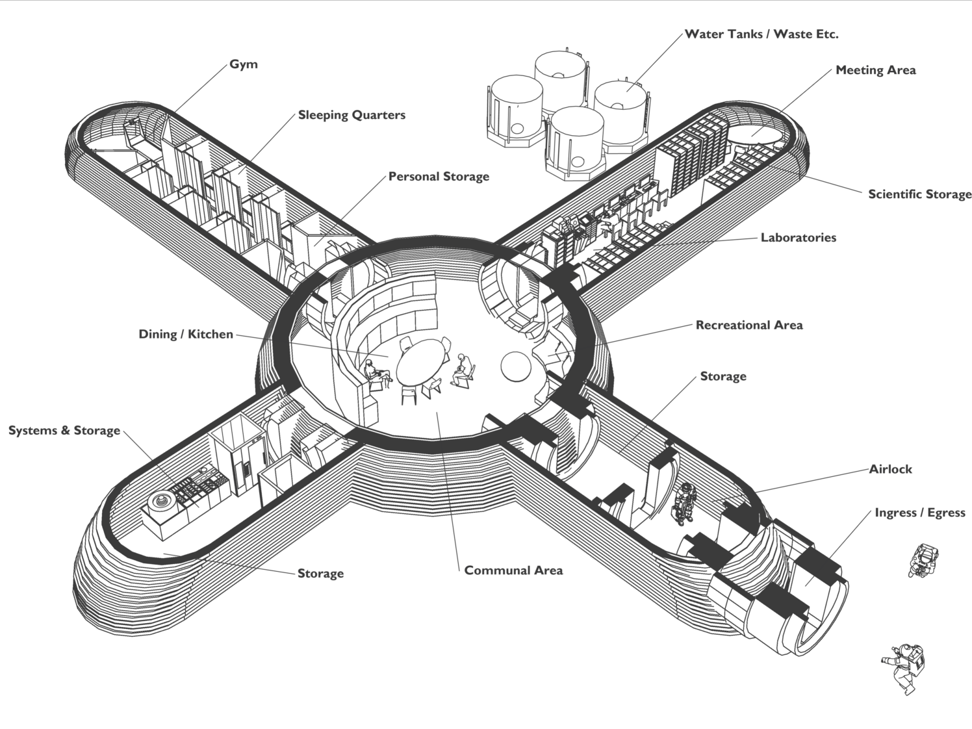
Poland is about to launch a fake Mars colony on a hilltop
Six volunteer astronauts will work and live inside faux habitat for two weeks to gather data organisers hope to use to support real missions

By Dave Mosher
Atop a forested ridge in southern Poland, a mission on the surfaces of both Mars and the moon is about to launch.
The two-week mission is just a simulation, of course, since no entity on Earth is prepared to inhabit deep space. But the experiment — called the Poland Mars Analogue Simulation 2017 — will study a group of six volunteer “analogue” astronauts as they work through a realistic schedule of space exploration, then provide those findings to anyone who’s drawing up crewed missions beyond Earth.
“This mission will be one of the most comprehensive Mars analogue missions ever conducted in Europe,” Mina Takla, spokesperson for the PMAS 2017 mission, said in a YouTube video promoting the project.
The experiment, which Business Insider first learned about through the Dawn of Private Space Science Symposium on June 4, is being spearheaded by a subgroup of the United Nations Programme on Space Applications, specifically the Space Exploration Project Group. More than a dozen partners are involved, including The Mars Society, European Space Agency, and European Space Foundation.
The project’s central feature is a four-armed, domed habitat in the countryside of Rzepiennik Biskupi, Poland (and near the Queen Jadwiga Astronomical Observatory, no less).
To build the habitat, PMAS rounded up material donations and money from corporate sponsors, and raised tens of thousands of dollars through crowdfunding sites.
Organisers have dubbed their faux habitat the Martian Modular Analog Research Station, or M.A.R.S.
The entire base was designed by British architect Scott Porter, according to Bellon.
The dome will be the headquarters, and each arm will house different groups of facilities: One is dedicated to scientific research, another to personal quarters (including a gym), a third to storage and systems, and another to an airlock.
This 360-degree, wrap-around video lets you explore the domed headquarters (click and drag the video to look around):
Six analogue astronauts will “land” in the habitat on July 31, then work and live and work inside it through August 13.
The volunteers hail from Puerto Rico, Israel, Spain, France, the US, and Nigeria. Meanwhile, a larger support team will operate as mission control in the northern Polish city of Torun, including psychologists to monitor the astronauts.
“[PMAS 2017] will be one of the most international, multicultural, and interdisciplinary analogue missions ever conducted, with members from over 28 different countries and representing scientific disciplines ranging from engineering to astrophysics, psychology, geology, and biology,” Takla said.
In addition to following a strict schedule of experiments, maintenance, and personal time, mission managers will simulate other realities for a far-off planetary mission, including spacesuits to leave M.A.R.S., a rover to ride around on, and annoying communications delays.
“[T]he first three days of the 14 days of the simulation will be in ‘Lunar mode’ with a real-time communication between habitat and Mission Control, before we go for the remaining 11 days into the Martian mode,” Tajana Lucic, a co-leader of the project, told Business Insider.
When the Martian mode starts, Lucicć said, “the time delay will be 15 minutes, and simulates the long distance between Earth and Mars and the related communication delay.”
The PMAS 2017 mission isn’t the only project trying to figure out how to run a tightly operated lunar or Martian base.
HI-SEAS in Hawaii, for example — which former Business Insider reporter Kelly Dickerson visited — has astronauts who live and work inside a habitat built on the side of a barren volcano.
Russia, China, and the ESA have also run six willing “astronauts” through a psychological gauntlet with its US$15 million Mars500 experiment.
That project, which ended a few years ago, had the astronauts stay inside for 520 days, or nearly a year and a half, to see what challenges they faced — and how to prevent or solve them when real Mars colonisation missions actually begin. (Boredom, concluded an exhaustive study of the project, is one of the greatest hurdles to overcome.)
Such information could prove extremely valuable to the first nation (or private company, like SpaceX) to land people on Mars. Whoever is spending tens of billions of dollars to get the job done, they’ll not only want a crew to survive to tell the tale, but also make the best use of their time some 140 million miles from Earth.


